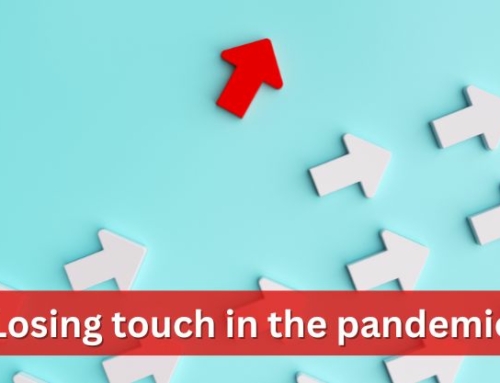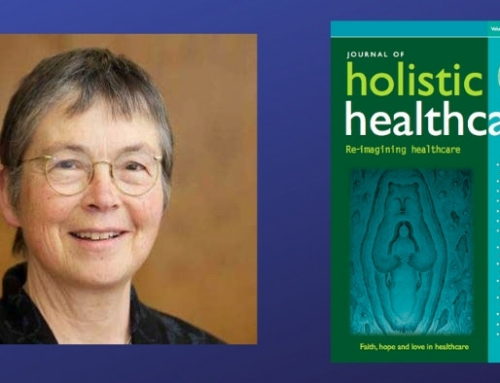Medical Education’s Changing Story
From our Journal of Holistic Healthcare JH17.1 Spring 2020
Stories in medicine
London-based GP; chairperson of the Council of the Royal College of General Practitioners, 2010 to 2013

I have just passed my 28th year milestone working in the same GP practice in south London. I began working there having first trained in psychiatry. I have worked at the interface between mental health and primary care ever since with a special interest in the care of substance misusers, the homeless and currently mentally ill doctors. For the last 12 years I’ve led the largest physician health service in Europe – a service which has seen more than 10,000 doctors and dentists with mental illness present to it. I’m only the second woman in its history to lead the Royal College of General Practitioners. I trained in group analysis, obtaining the diploma of Group Analysis in 2014, and use my experience from this field to help understand why doctors are so unhappy. In 2019 I was elected the Co-Chair of the NHS Assembly and I’m proud to still be a frontline GP.
Introduction
In my time at medical school, close friends were made over the dissecting table, and I soon learnt to enjoy London’s feast of food and arts. Of course, like most of us medics I arrived at medical school still in the throes of adolescence and with all of its age-old difficulties. Though so much has changed since then, recruitment criteria are much the same, and the late teens and early 20s are certainly no less tumultuous: if anything quite the reverse. And so, for a significant minority of students, life in our 21st century medical schools – for many reasons quite a few of them new ones – has become a lot less fun. Compared with the 1970s, today’s curriculum is packed, and students even have to sign into lectures and tutorials to prove they have attended. They must work harder, and in ever larger intakes where it can feel much more difficult to make the kinds of connection I was able to make in the 1970s, when schools took in only 100 or so students a year; the generation before had been only 50. Yet today’s intakes are commonly 300-plus and they face more assessments, in examinations scattered throughout their training, rather than fixed at the end of second and final years as ours were in the 70s; plus ongoing mandatory personal reflections add to the workload. So much pressure too, in ever busier and often overstretched and industrialised hospitals, where interventions are more technical and the patients frequently more chronically ill and multi-morbid than in the far off days of the 1970s.
The mental health of medical students
A question then: were I and my colleagues more robust and resilient back then? Or were the pressures really less, or the camaraderie and fun all that stronger? Or did we feel less able to admit if we felt emotionally strained or mentally unwell? The mental health of medical students has been a topic of research for several decades. In 1986 Jenny Firth-Cozens began a longitudinal study on the wellbeing of second year medical students and followed them up over decades. At the time she found that among these students the estimated prevalence of emotional disturbance was around 30% compared with 10% in young unemployed men. Yet despite this high level of measured distress few medical students presented themselves to treatment services, but rather they self-managed or ‘coped’ alone. When students were asked about possible causes of their distress, the most frequent reason given was that they did not feel valued.
Two years later Firth-Cozens (1987) questioned the same students, now housemen, this time including a measure of depression. The rate of measured distress had risen to 50% (compared with 36% in civil servants) and the level of depression that met threshold for treatment was nearly 30%. This is an extraordinarily high rate of depression. To put it in context, it would mean that of her intake of 100 students, 30 were suffering from depression by the time they were house officers. This time the most cited reason house officers gave for their distress was overwork. At the time the average number of hours worked by house officers was around 80 hours a week, but it was not unusual for some weeks when on call for this to increase to 120 hours. Quite often this meant 36 hours continuous work without a break.
Surprisingly, though the house officers considered overwork the major cause of their distress, there was no correlation between actual hours worked and scores for depression. In fact, the opposite was found in Firth- Cozens later study (1992) – and this was corroborated by other researchers. It seemed that the least depressed doctors worked longer hours and vice versa.
In these studies, the majority of doctors were men. When women were looked at separately, they were found to have much higher rates of depression than women in the general population (46% vs 15% in the general population). For young female doctors it was the conflict between their career and personal life that most strongly related to depression (Firth-Cozens, 1990).
Fast forward 30 years
Mental illness among medical students is as prevalent today as it was in the early 1980s though the difference is that we are more aware of it, more able to talk about it and hopefully to do something to address it. It is not just a feature of the UK but a global phenomenon. A meta- analysis (Rotenstein et al, 2016) of nearly 200 studies of medical student depression and suicidality from 43 countries found the estimated overall pooled prevalence of depression was nearly 30% with a range from around 10% to 56%. The estimated pooled prevalence of suicidal ideation was 11% and ranged from 7% to 24% depending on assessment modes. These are high levels of distress.
Australian data on medical students found one in five medical students in the previous 12 months had thoughts of suicide; half of medical students suffered from emotional exhaustion and nearly 20% have been diagnosed with depression. Other studies from countries ranging from the UK to Portugal find similarly high rates of depression. Most of the studies find that the prevalence of mental illness tended to improve as graduation came closer. As with studies on doctors and mental illness various methodological problems could have led to an over-representation of mental illness. For example, there is likely to be a significant publication bias towards reporting symptoms of high psychological distress. Better quality studies tend to report lower prevalence. Nevertheless, on balance, research suggests that medical students have a higher rate of depression, anxiety and other psychological problems than an aged- matched population and that the level of mental illness tends to improve closer to graduation.
Why are medical students more at risk?
Various confounders make it difficult to explain why medical students might be more at risk of mental illness. Medical students selection tends to favour candidates who have personality factors that foster some known antecedents of mental illness: perfectionism (‘I must do this right, mistakes are intolerable’), and obsessionalism (‘I must do this, and I can’t give up till I finish’). Even altruism (‘I care for my patients more than myself, and
my needs are secondary to those I treat’) has obvious downsides. In fact, medical schools prospectuses are scattered with adjectives like motivated, committed and resilient as selection criteria for entry. These personality traits, however, can lead doctors to become more self- critical, less tolerant of errors in themselves or their colleagues and to never feeling good enough. This can result in a vicious cycle of failure, procrastination, checking and seeking constant reassurance.
Perfectionism – a drive for flawlessness and for setting extremely high standards for themselves and others – is one of the most pervasive of personality traits found in doctors. But perfectionism is probably the single most significant predisposing personality trait for mental illness. In healthy amounts it makes for good doctors but over- done it can instead lead to hypervigilance, anxiety and a fear of making errors. A study of perfectionism in young people across different countries and over a 16-year period found that levels have increased year on year.
Training and resilience
Resilience is about bending with pressure and bouncing back. Despite the current moral panic that medical students and young doctors lack the resilience of yesteryear’s doctors, there is no evidence that they are more nor less resilient. Yet when put under enough external pressure, anyone will reach a point where they can take no more. It is most likely that it is the external pressures that have changed over the years rather than the individual. Medicine is a long and more than ever gruelling training, where students and doctors in training are in a perpetual cycle of assessment, scrutiny, grading, and comparison with peers, where their ‘coping reserve’ is constantly being depleted. As such if today’s medical students have less time and energy to form and sustain relationships and for self-care this may partially explain their vulnerability to depression.
Addressing students’ mental health problems
Medical schools might want to consider decluttering the curriculum. A study conducted at St Louis Medical School in the US researched adaptations to the pre-clinical curriculum that aimed at reducing levels of depression and anxiety in students. Over a four-year period, the changes included introducing a pass/fail grading (rather than scores), a 10% reduction in curricular time, efforts to reduce the amount of detail taught, longer electives, theme-based community learning and spaces for peer- group reflection. The medical school implemented a confidential option to track depression and anxiety and those students who screened positive for moderate to severe symptoms of depression or severe symptoms of anxiety were contacted by a mental health provider.
The effects of these interventions changed as students progressed through their training. The impact of the changes was greatest for first-year students. Objectively (as compared with a questionnaire administered to all US medical students) and subjectively (on free text comments) these students had lower rates of mental illness and better ‘satisfaction’ with their training. However, as students progressed, the interventions appeared to have less effect: in fact, rates of depression and anxiety did not fall as far for final year students as they had in their first year. As students progressed to their clinical attachments it became harder to control the negative effects of external stressors, which were beyond the control of the medical school.
The authors attributed inability to reduce rates of mental illness as being due to four main factors. The first, the learning environment which students rotated through involved multiple posts, making it very difficult to provide a consistently supportive offering. Second, the poor mental health of residents and physicians the students encountered might have had a contagious effect on their mental health (if everyone in a restaurant complains of poor food, the expectation will be of poor food). Third, the key source of stress in the third year was the competition for future residency posts. Finally, ‘resilience’ training in first to fourth years did little to counteract the psychologically stressful conditions students were exposed to in their clinical posts.
Ways forward
Until a way is found of reducing these psychological stressors, high rates of mental illness in students will persist. We cannot resilience-train our way out of this issue. It requires medical schools to address their processes and implement changes more seriously throughout students’ training. This is not about molly- coddling students – it is about removing extraneous causes of pain from an already strenuous training and ensuring that they have the support, space, time and adaptive energy needed for a (usually) young person to make the difficult transition from student to fledgling doctor. The GMC has recently published an independent report on mental health of doctors (GMC, 2019). The findings are just as relevant to students. What doctors want, what will help their wellbeing and stop them getting burnt out are three things: authority, belonging and competence. This is about adding back control to highly intelligent, committed students and stopping treating them as school children needing to be shepherded through their training.
Firth-Cozens J (1990) Source of stress in women junior house officers. BMJ, 301 (6743), 89–91.
Firth-Cozens J (1987) Emotional distress in junior house officers. Br Med J (Clin Res Ed), 295 (6597), 533–536.
Firth-Cozens J, Store D (1992) Registrars’ and senior registrars’ perceptions of their audit activities. BMJ Quality & Safety, 1(3), 161–164.
GMC (2019) Caring for doctors: Caring for patients. London: GMC.
Rotenstein LS, Ramos MA, M Torre M, Bradley Segal J, Peluso MJ, Guille C, Sen S, Mata DA (2016) Prevalence of depression, depressive symptoms, and suicidal ideation among medical students. A systematic review and meta-analysis. JAMA, 316(21) 2214–2236.





